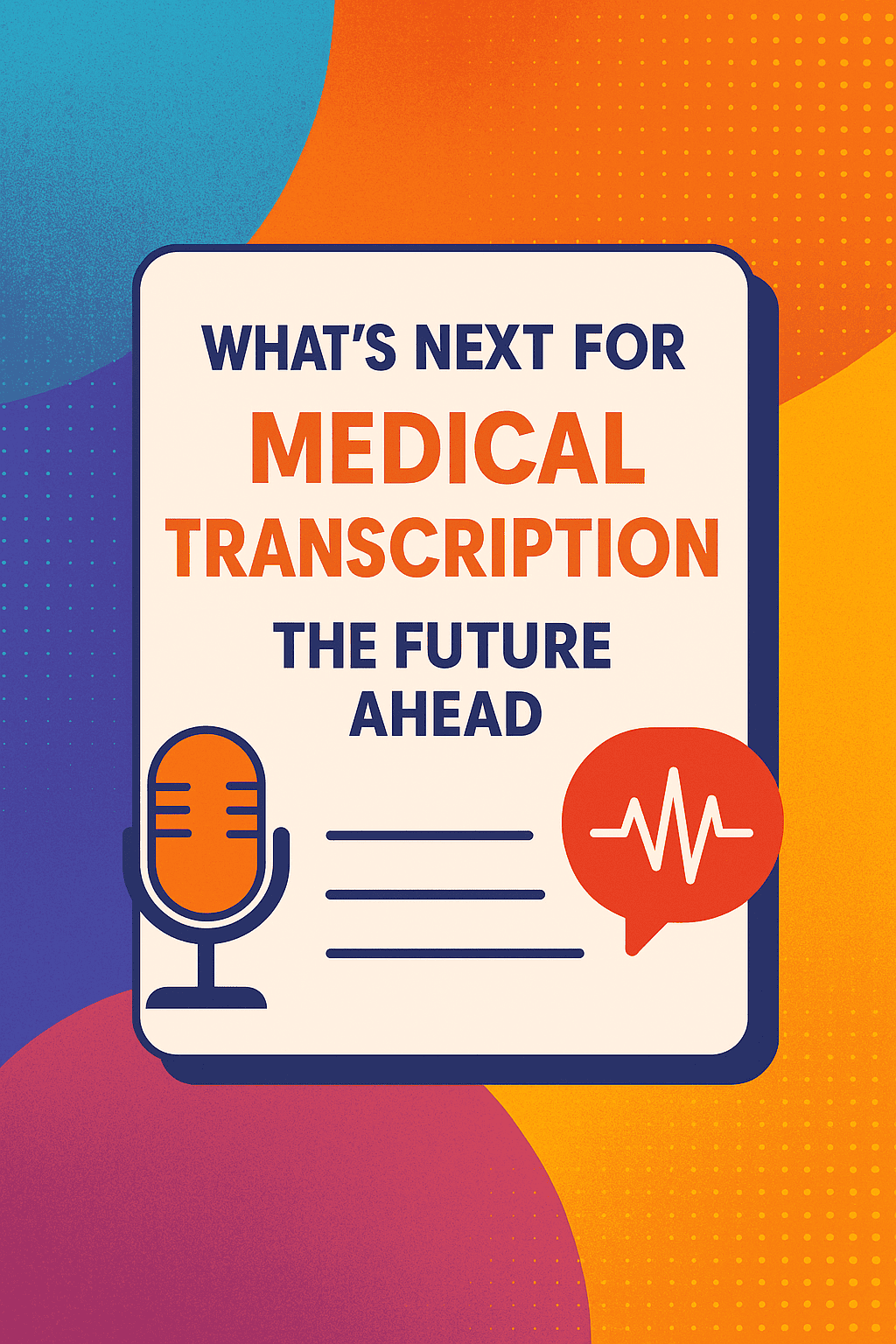Updated on: July 15, 2025
🔍 Introduction
In today’s fast-paced healthcare environment, clinicians are often overwhelmed by the growing burden of documentation. Medical transcription, once a purely manual task, is undergoing a seismic shift driven by Artificial Intelligence (AI). The future of medical transcription lies in automation, accuracy, and efficiency, ensuring that healthcare professionals can spend more time focusing on patients rather than paperwork. This detailed guide explores the transformation underway and how AI is shaping the future of medical transcription.
📊 Why Medical Transcription Is Evolving
Healthcare documentation is essential for patient safety, billing, and care coordination. However, traditional methods present multiple challenges:
- Time-Consuming: Clinicians spend up to 35% of their time on documentation.
- Error-Prone: Manual transcriptions are susceptible to mistakes, omissions, and misinterpretations.
- Regulatory Pressures: Compliance with HIPAA and insurance documentation standards requires precision.
- Burnout: Excessive documentation contributes to physician stress and burnout.
AI-driven transcription offers a solution to these problems by automating the process and improving quality.
🤖 How AI Is Transforming Medical Transcription
AI medical transcription leverages cutting-edge technologies:
- Speech Recognition: Converts spoken language into text in real-time.
- Natural Language Processing (NLP): Understands clinical context to generate structured notes.
- Large Language Models: AI models can differentiate between subjective and objective data, flag key terms, and organize content into SOAP or narrative formats.
- Voice-to-Text EHR Integration: Seamlessly transfers AI-generated notes into Electronic Health Records (EHR).
Key Benefits:
- Drastically reduces documentation time.
- Enhances accuracy with clinical context awareness.
- Supports multilingual and accent diversity.
- Reduces transcription costs over time.
🕒 Emerging Trends Shaping the Future
1. Ambient AI Scribes
AI-powered ambient scribes capture entire patient visits, automatically generating notes without the clinician needing to type or dictate manually. This hands-free approach can reduce documentation time by 60-70%.
2. Predictive Analytics Integration
Advanced AI systems will not only document but also predict patient risks, helping providers make proactive clinical decisions.
3. Generative AI
The use of generative AI (like GPT models) can produce patient summaries, educational handouts, and even preliminary diagnostic suggestions based on real-time conversations.
4. Big Tech Investments
Major players such as Amazon, Microsoft, and Google are investing heavily in healthcare AI, ensuring rapid innovation and widespread adoption.
🔍 Key Considerations and Challenges
While AI medical transcription presents numerous benefits, there are challenges that must be addressed:
- Accuracy: AI systems must continuously improve to avoid critical errors.
- Data Security: Ensuring HIPAA compliance and safeguarding patient data is non-negotiable.
- Human Oversight: AI-generated notes require clinician validation to maintain accountability.
- Adoption Barriers: Training, cost, and resistance to change can slow adoption.
🎥 Learn More: YouTube Video Resources
- How AI Medical Scribes Work: Real-Time Transcription Demo
- AI vs. Human Medical Scribes: Efficiency Comparison
- The Future of AI in Healthcare Documentation
These videos provide practical demonstrations of AI scribes in action.
🛠️ How DocScrib Leads the Way
DocScrib’s AI-powered transcription platform revolutionizes healthcare documentation by:
- Capturing natural clinician-patient conversations.
- Structuring notes into SOAP, narrative, or specialty-specific formats.
- Offering real-time EHR-ready transcription.
- Ensuring HIPAA-compliant data protection.
- Reducing time spent on documentation by over 50%.
With DocScrib, healthcare teams can shift from manual typing to intelligent scribing, unlocking more time for patient care.
✅ Conclusion: The Next Era of Medical Documentation
The future of medical transcription is intelligent, efficient, and integrated. AI transcription doesn’t just save time—it transforms the quality of care, clinician well-being, and operational efficiency.
Clinicians who adopt AI-driven tools like DocScrib will be at the forefront of this healthcare revolution.
